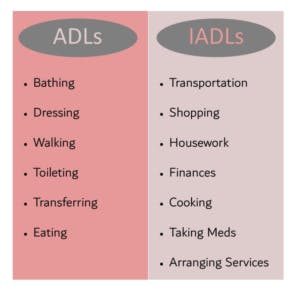
The sit to stand transfer is an important functional movement that enables a person to safely move from a seated position to a standing position. This transfer is important for the completion of Activities of Daily Living (ADLs), and Instrumental Activities of Daily Living (IADLs), and serves as a starting point for ambulation.

Let’s Sit to Stand!
The sit to stand can also be used as part of therapeutic exercise/activities to help build lower extremity muscle strength. Research has shown that as a person ages, there is a decrease in LE muscle strength and diminished anterior weight shift during sit to stand, making the transfer more difficult to complete. Here are some examples of the Sit to Stand transfer, and how they can be made more challenging/easier.

Things to Consider:
Pelvis Position: You need to shift your hips/pelvis forward in the chair to correctly position yourself for the movement. Appropriate pelvic position allows for correct foot positioning and forward trunk lean.
Foot Position: Your feet should be shifted under your knees so that your base of support is where it needs to be to safely perform the transfer.
Adequate Forward Trunk Lean: forward trunk lean allows for the appropriate weight shift of the body’s center of mass over the base of support during the movement. Inadequate trunk lean can make the activity much harder to perform and can lead to injury/falls.
Variable Factors:
Use of Hands: 2 hands, 1 hand, no hands
Chair Height: The higher the chair, the easier the movement
Holding Weight: Increase resistance by adding weights
Number of Repetitions: The more repetitions, the harder the muscles must work

Sit to Stand with 2 Arm Support

Sit to Stand without Arm (Upper Extremity) Support


Sit to Stand with Weighted Bag

